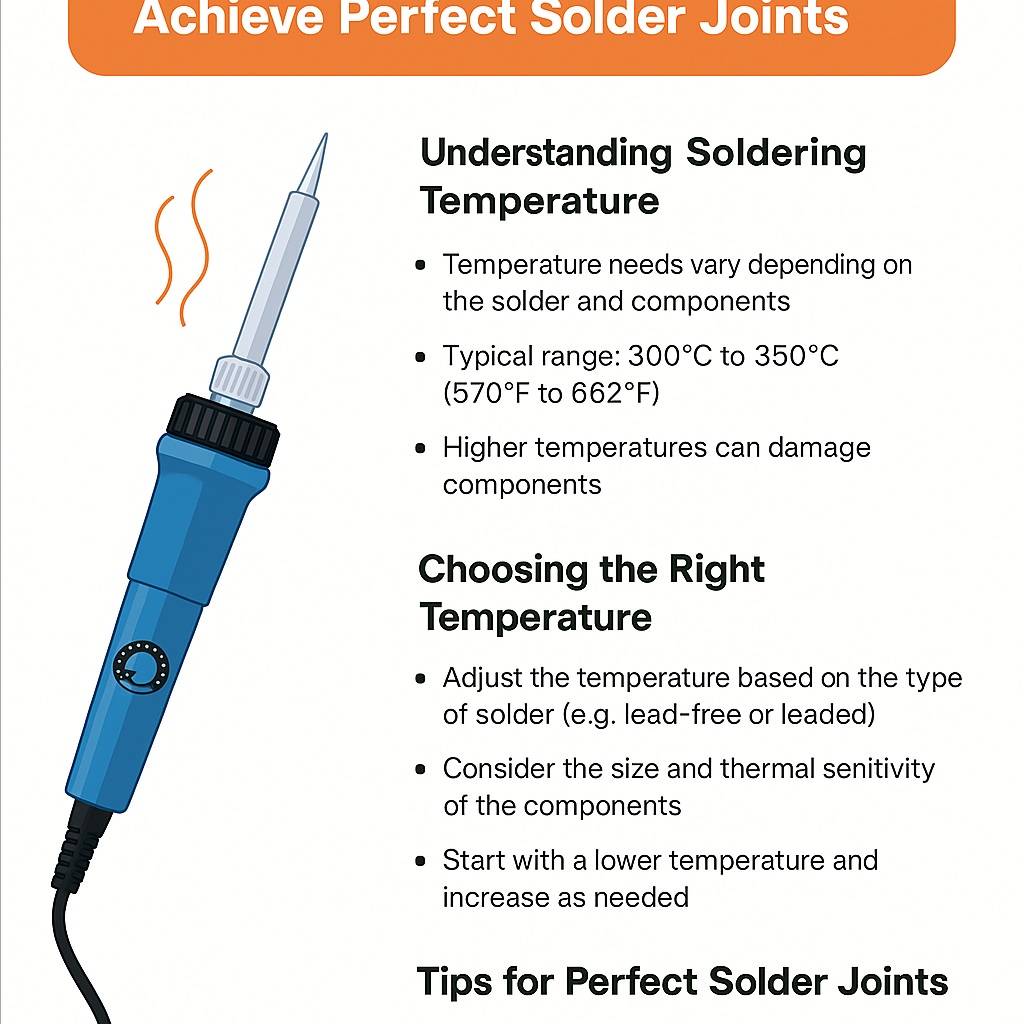Soldering is an essential skill for electronics enthusiasts, DIYers, and professionals working with circuit boards and electrical components. One of the most crucial aspects of successful soldering is controlling the soldering iron temperature. Setting the right temperature can make a significant difference in achieving strong, reliable solder joints. In this guide, we’ll explore the ideal temperature settings, how to adjust them, and the best soldering tools and kits to use for different applications.
Why Soldering Iron Temperature Matters?
The temperature of your soldering iron affects the quality of your work. Too high a temperature can burn components, damage circuit boards, and cause poor connections. Too low a temperature can result in cold joints, making the connection weak and unreliable. Therefore, adjusting your soldering iron to the correct temperature ensures clean and durable solder joints.
Optimal Temperature Settings for Different Soldering Applications
Different soldering tasks require different temperature settings. Here’s a general guide:
- Electronics and Circuit Boards: 320°C – 380°C (608°F – 716°F)
- Fine Wires and Small Components: 260°C – 320°C (500°F – 608°F)
- Thicker Wires and Large Components: 380°C – 450°C (716°F – 842°F)
- Lead-Free Soldering: 350°C – 400°C (662°F – 752°F)
- General Soldering Work: 330°C – 380°C (626°F – 716°F)
Using a soldering iron with an adjustable temperature feature allows you to set the ideal heat level based on your project needs.
Best Soldering Tools and Kits for Precise Temperature Control
To ensure precision in soldering, invest in a high-quality soldering kit that offers temperature control and durable tips. Here are some top recommendations:
- Adjustable Temperature Soldering Iron: Ideal for professionals and hobbyists, these irons allow precise temperature regulation for different soldering jobs.
- Soldering Station with Digital Display: Provides accurate temperature control and stability, perfect for fine electronics work.
- Soldering Iron with Ceramic Heating Element: Offers fast heat-up times and consistent performance for smooth soldering.
- Complete Soldering Kit: Includes multiple iron tips, solder wire, flux, and a cleaning sponge to enhance soldering efficiency.
Tips for Maintaining the Right Soldering Iron Temperature
- Use the right tip size and shape: A larger tip retains heat better, while a finer tip is ideal for precision work.
- Keep the tip clean: Use a damp sponge or brass wire cleaner to remove oxidation and maintain efficiency.
- Allow the iron to reach full temperature: Give your soldering iron enough time to heat up before starting.
- Adjust temperature based on solder type: Lead-free solder requires a higher temperature compared to leaded solder.
- Avoid overheating components: Prolonged exposure to excessive heat can damage sensitive electronic parts.
Final Thoughts
Understanding and controlling soldering iron temperature is essential for achieving professional-quality solder joints. By selecting the right soldering tools and kits and following best practices, you can improve your soldering skills and complete projects with precision and reliability. Whether you’re working on electronics, DIY crafts, or professional repairs, maintaining the correct temperature is the key to successful soldering.
